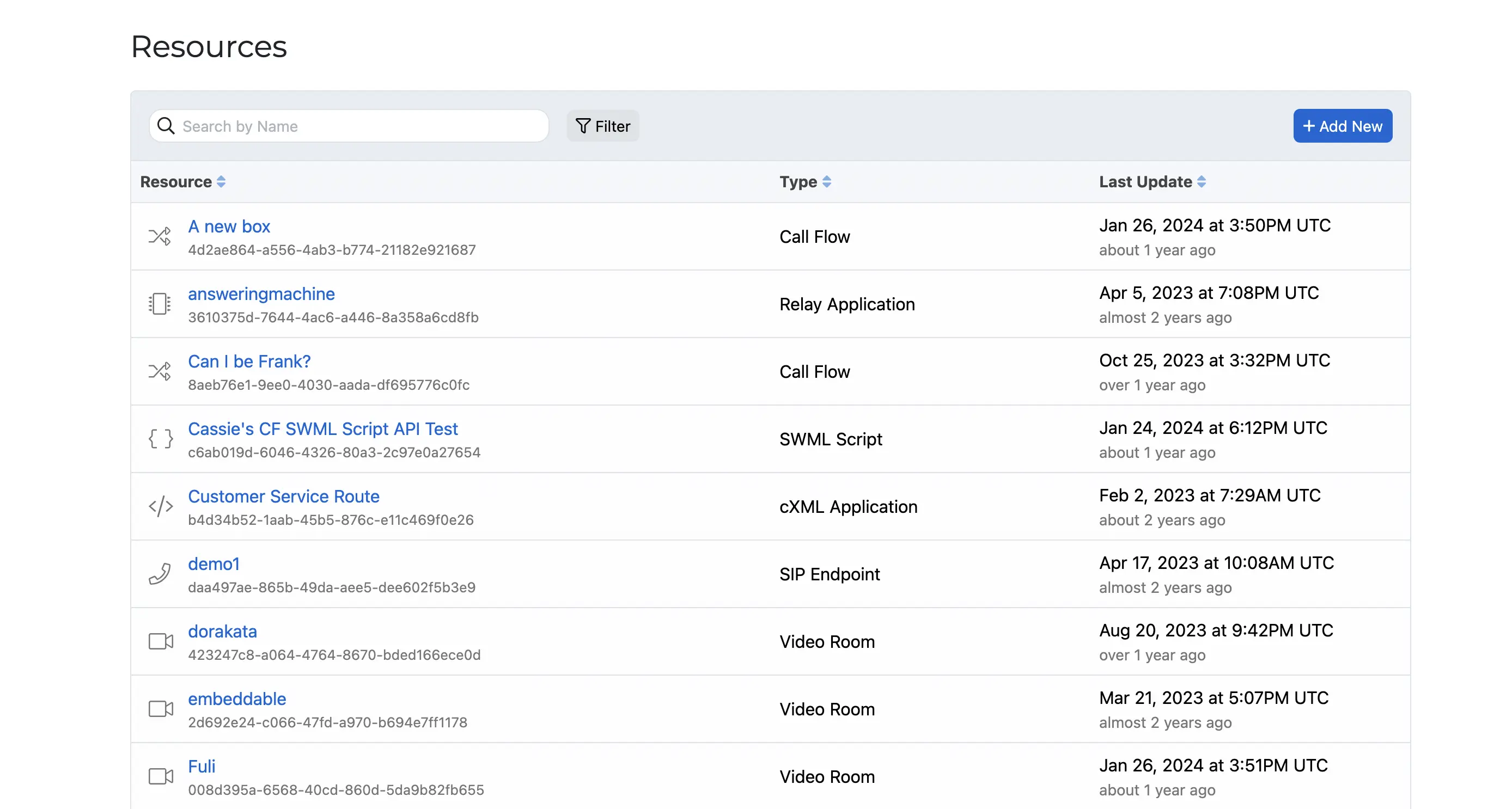Addresses
Each Resource is uniquely identified by its Address, allowing for precise targeting and interaction within the Call Fabric ecosystem. This simplifies the development process by providing a standardized way to handle different communication elements, and enhances flexibility, as developers can interact with a wide range of communication tools using a unified approach.
Resources can have multiple addresses, and addresses are mutable. For instance, you can map a SWML script and a Video Room to the same Resource Address. These addresses can be changed or deleted later as needed.
Types
Call Fabric supports multiple address types to accommodate different communication protocols and use cases:
- Phone numbers: Traditional phone numbers in E.164 format (e.g.,
+14155551234) that can be mapped to resources for PSTN connectivity. - SIP addresses: SIP URIs for VoIP communications (e.g.,
sip:user@domain.com) enabling direct SIP endpoint connections. - Alias: Custom names that provide alternative addressing for resources, making them easier to remember and use (e.g.,
/support-queueor/main-conference).
Each address type follows the same context and naming conventions described below, allowing seamless integration across different communication channels.
Each Resource Address has two components:
- Context: Idenitifies the path of the address. Currently can be a
publicorprivate. - Name: By default the name of the address will be the name of the resource, however,
a user can also change or add a
aliasof an address.
For example, the address for an AI Agent resource named Alice-AI in the public context would be /public/Alice-AI.
If you were to change the alias to John-AI the address would become /public/John-AI.
If you are interacting with a resource from within the same context, you can omit the context from the address.
For example, if you are interacting with a Subscribers resource named Bob from within the private context,
you can use the address /Bob instead of /private/Bob.
Once you have created a Resource, you can use the address to interact with it within the Call Fabric ecosystem.
Additionally, you can view the created resource in the Resources tab of the SignalWire Dashboard.
Here, you can view the address, type, and other details of the resource.

The filterable Resources list in the SignalWire Dashboard.